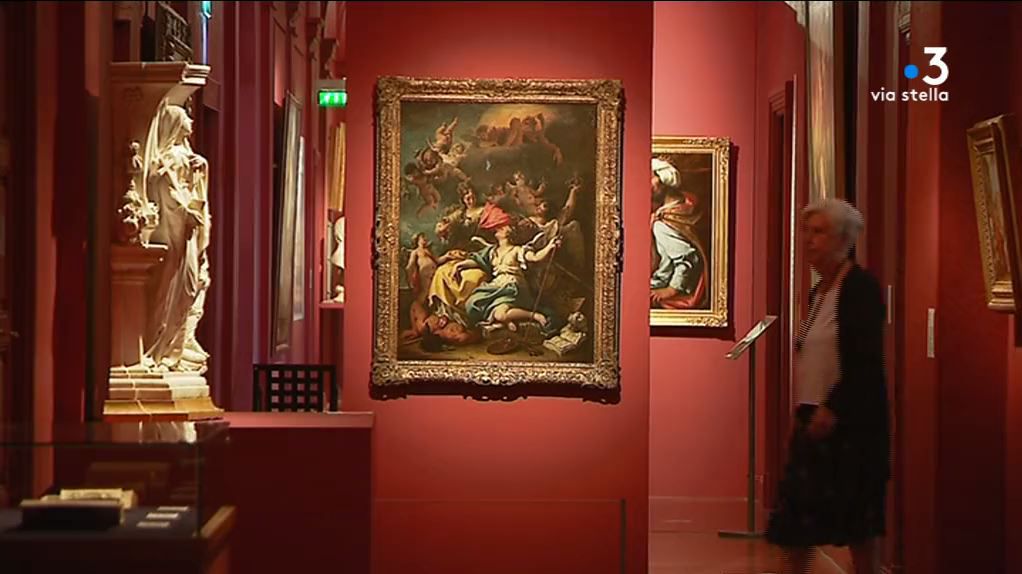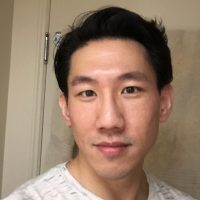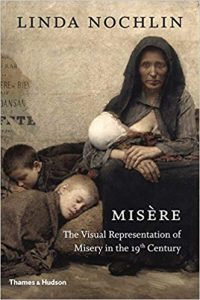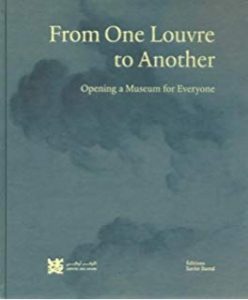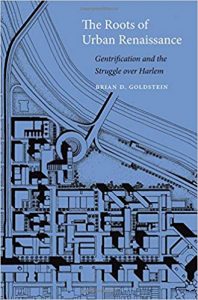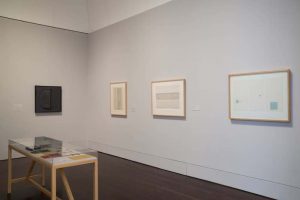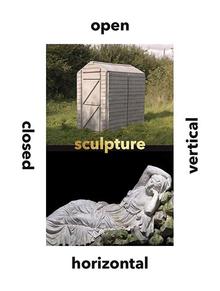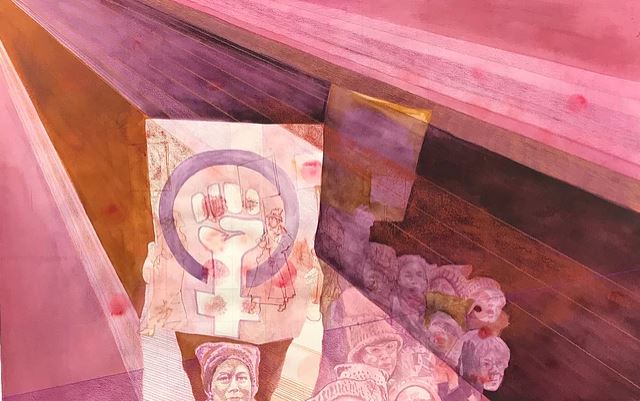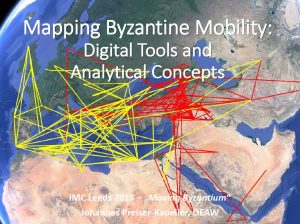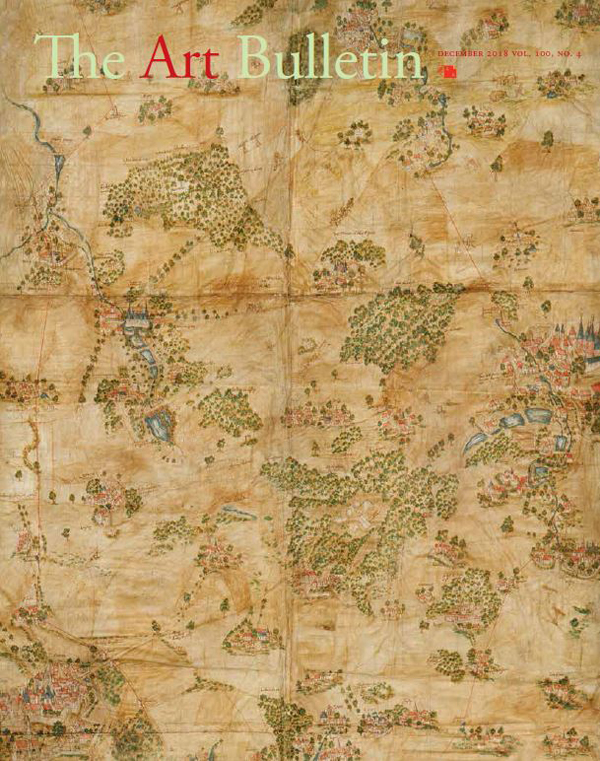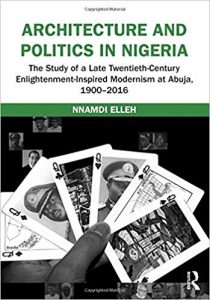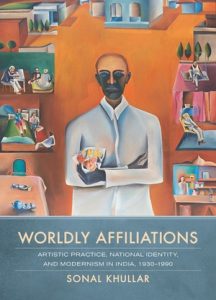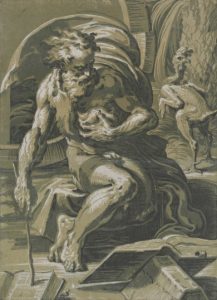CAA News Today
Meet the 2018 Professional Development Fellows
posted by CAA — Jan 28, 2019
CAA has awarded two 2018 Professional Development Fellowships—one in art history and one in visual art—to graduate students in MFA and PhD programs. In addition, CAA has named one honorable mention in art history and two in visual art. The fellows and honorable mentions both receive a complimentary one-year CAA membership and registration for the 2019 Annual Conference in New York City.
The recipient of the $10,000 fellowship in art history is C.C. McKee, a dual PhD candidate in the Department of Art History at Northwestern University and the École des hautes études en sciences sociales in Paris. Accepting the $10,000 fellowship in visual art is Camila Labarca Linaweaver, a MFA candidate in Printmaking at the University of Oklahoma.
The honorable mention for art history goes to Julia Vázquez, a PhD candidate in the Department of Art History & Archaeology at Columbia University. The honorable mentions in visual art are awarded to Kira Dominguez Hultgren, who is earning a MFA/MA in Fine Arts and Visual and Critical Studies at California College of the Arts, and Rowan Renee, who is currently pursuing their MFA at the University of Michigan.
The two fellows and three honorable mentions will be formally recognized at the 107th Annual Conference during Convocation on Wednesday, February 13, 2019.
CAA’s fellowship program supports promising artists and art historians who are enrolled in MFA and PhD programs nationwide. Awards are intended to help them with various aspects of their work, whether for job-search expenses or purchasing materials for the studio. CAA believes a grant of this kind, without contingencies, can best facilitate the transition between graduate studies and professional careers. The program is open to all eligible graduate students in the visual arts and art history. Applications for the 2019 fellowship cycle will open in the late spring.
FELLOW IN ART HISTORY
 C.C. McKee
C.C. McKee
C.C. McKee is a dual doctoral candidate in the Department of Art History at Northwestern University (advised by Huey Copeland) and the École des hautes études en sciences sociales in Paris (advised by Anne Lafont). McKee received his BA from the University of California, Berkeley as a double major with honors in the history of art and highest honors in history.
McKee’s current dissertation project takes up art and visual culture from the francophone Caribbean during the long nineteenth century, arguing that, on the one hand, painting could bolster imperial authority by eliding the coeval inhumane violence and ecological brutality of colonialism. On the other, these artworks are inadvertent repositories for parallel ecologies opening onto embodied African diasporic knowledge of the Caribbean landscape.
This project represents one facet of McKee’s broader investment in the transhistorical relationship between colonialism (particularly during the seventeenth through nineteenth centuries) and its continued effects in the present. These interests include, art of the Atlantic World, contemporary African and African diasporic art, and queer aesthetic practices; all of which are indebted to black feminist, ecocritical, postcolonial, and psychoanalytic theories. McKee has developed these perspectives in various pieces of art criticism; with exhibitions at the Block Museum, Iceberg Projects (Chicago, IL), and the Ghetto Biennale (Port-au-Prince, Haiti); as well as in a forthcoming article for Art Journal. Moving forward, McKee will pursue a scholarly and curatorial practice that challenges the boundaries between the university classroom and the museum, between academic publication and exposing a broad public to the rich artistic traditions of the Caribbean.
FELLOW IN VISUAL ART
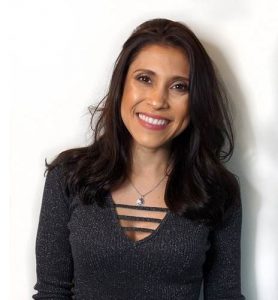 Camila Labarca Linaweaver
Camila Labarca Linaweaver
Camila Labarca Linaweaver was born in Santiago, Chile and immigrated to the United States at the age of 7. She lived and studied in Texas and holds a BFA from The University of Houston Clear Lake. She is a first-generation college graduate and is currently an MFA Printmaking candidate at The University of Oklahoma. While pursuing her graduate studies she has taught undergraduate courses in Printmaking and Drawing. Linaweavers focus within the printmaking medium is almost exclusively on singular and experimental prints. Using the landscape as a metaphor, she crafts narratives of immigrant displacement, loss, and alienation. Recently she has delved into time-based work, subjecting monotypes to various stop motion processes. Her unique approach to confronting her personal history as an immigrant results in highly nuanced imagery that aims to bridge opposing sides and create positive discourse within the context of global immigration issues.
As an emerging artist, Linaweaver has exhibited extensively throughout the US and has chosen to pursue a career in academia. In the future she aspires to participate in residencies and exhibitions that focus on community engagement and the intersection of landscape, identity, and culture.
HONORABLE MENTION IN ART HISTORY
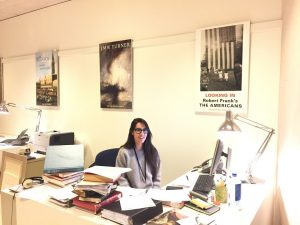 Julia Vázquez
Julia Vázquez
Julia Vázquez is a PhD candidate in the Department of Art History & Archaeology at Columbia University, where she is currently completing a dissertation titled “The Artist as Curator: Diego Velázquez, 1623-1660.” Her dissertation reconsiders the curatorial career of Diego Velázquez at the court of King Philip IV of Spain. It examines the major redecoration projects that Velázquez executed for galleries in the Spanish royal palace, considering the ways that his ambitions and interests as a painter found a new expression in this medium. It also analyzes significant paintings that Velázquez made in response to the royal art collection, considering the impact on his painting practice not only of its contents, but also of its display. Her research therefore proposes the career of Diego Velázquez at the Hapsburg court as a major episode in the history of the artist-curator, ultimately arguing that Velázquez’s simultaneous creative identities as painter to the king and curator of his art collection were mutually transformative.
Previously, Julia has held internships and fellowships at the Musée du Louvre, the Whitney Museum of American Art, the Meadows Museum, the Museo Nacional del Prado, and the National Gallery of Art. While at the Meadows, she curated two exhibitions: “Picasso’s Dream and Lie of Franco: The Spanish Civil War in Print” (summer 2017) and “Murillo at the Meadows: A 400th-Anniversary Celebration” (2017-2018). She is currently the Hilla Rebay International Fellow at the Solomon R. Guggenheim Museum, the Museo Guggenheim Bilbao, and the Collezione Peggy Guggenheim.
HONORABLE MENTIONS IN VISUAL ART
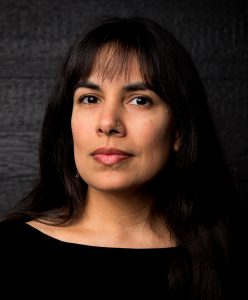 Kira Dominguez Hultgren
Kira Dominguez Hultgren
Kira Dominguez Hultgren (b. 1980) is a California-, Utah-, and Minnesota-based textile artist. She studied French postcolonial theory and literature at Princeton University (BA Comparative Literature, 2003), and performance and fine arts in Río Negro, Argentina from 2010-2012. While in Patagonia, she apprenticed with master weaver Mary Coronado, where Dominguez Hultgren studied the process and history of indigenous warp-faced weaving of Mallín Ahogado on a Mapuche vertical post loom.
Today, Dominguez Hultgren combines her interests in postcolonial theory and weaving in both her art and writing-research practice. In her third year at California College of the Arts, Dominguez Hultgren is earning a dual-degree MFA/MA in Fine Arts and Visual and Critical Studies. Her research interests include material and embodied rhetorics, loom technologies, decolonizing material culture, and analyzing textiles as a performative critique against the visual. She has won numerous awards including California College of the Art’s All College Honors Graduate Fine Art Award, the Edwin Anthony and Adalaine Boudreaux Cadogan Scholarship, and the Lenore Tawney Fiber and Material Studies Scholarship. Dominguez Hultgren is represented by Eleanor Harwood Gallery in San Francisco, where she had her first solo show, Wingspan, in 2018.
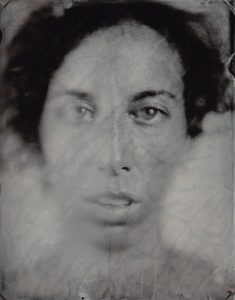 Rowan Renee
Rowan Renee
Rowan Renee is a genderqueer artist who uses photography to interrogate how sexual bodies are gendered, victimized, policed and punished. Through photographic, printmaking and sculptural techniques, they produce and appropriate images that intervene on issues of authorship, the representation of queer and feminine bodies within the art-historical canon, and the intersection of homophobia and misogyny in sex law and copyright law. The disjunctures of pleasure and abjection, felt through jouissance, informs their manipulation of images. Through artistic labor, they see a means to construct transformative meaning from experiences of violence, persecution and erasure that threaten queer and feminine subjects.
Currently pursuing their MFA at the University of Michigan, Renee works between Ann Arbor, Michigan and Brooklyn, NY. Their career began in 2006, when they joined The Miss Rockaway Armada, a collaborative flotilla of thirty people who floated down the Mississippi river on junk rafts built from NYC construction waste. Recently, they have received awards from the Aaron Siskind Foundation, the Rema Hort Mann Foundation and the Anchorage Museum of Art, as well as fellowships from the Jerome Foundation and the McColl Center for Visual Art. In 2018 they were named an Elsie Choy Lee Scholar by the University of Michigan. Their solo exhibitions include Z at Pioneer Works (2015), Bodies of Wood at The Aperture Foundation (2017), and No Honor No Heart at the Center for Visual Arts Toledo (2019). Their work has been profiled on NPR, in The New York Times, VICE, Hyperallergic, Huffington Post, American Photo Magazine and Guernica, among many other publications.
New in caa.reviews
posted by CAA — Jan 25, 2019
Catherine Puglisi discusses Rencontres à Venise: Étrangers et Vénitiens dans l’art du XVIIe siècle, edited by Linda Borean and Stefania Mason Rinaldi. Read the full review at caa.reviews.
Meet the 2019 Student Scholarship Winners
posted by CAA — Jan 25, 2019
with support from

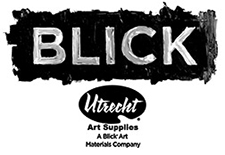
For the third year in a row, CAA is proud to partner with our sponsors, multinational publisher, Routledge, Taylor & Francis, and art materials specialist, Blick Art Materials, on student scholarships to assist CAA student members with conference costs.
Routledge, Taylor & Francis Student Scholarship
CAA Annual Conference Premier Sponsor, Routledge, Taylor & Francis supports four CAA student members with a $250 scholarship. The 2019 winners are:

Jonathan Anderson
Jonathan Anderson is an artist and art critic, and is currently working on a PhD at King’s College London. His research focuses on modern and contemporary art, with a particular emphasis on its relations to religion and theology. He is the coauthor of the book Modern Art and the Life of a Culture: The Religious Impulses of Modernism (2016), and he has contributed to various books and journals, including essays on John Cage, Francis Alÿs, Kris Martin, Rachel Whiteread, and others.
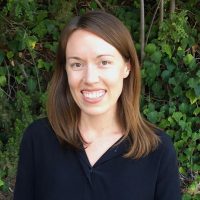
Noni Brynjolson
Noni Brynjolson is a PhD Candidate in Art History, Theory & Criticism at the University of California, San Diego. Her research analyzes socially engaged art projects in US cities. She is interested in looking at how artists address the politics of housing and gentrification through their work, as well as the informal communities that emerge within these projects. Noni is a member of the editorial collective of FIELD: A Journal of Socially Engaged Art Criticism, and her writing has been published in FIELD as well as in Hyperallergic, Akimbo, Geist and Craft Journal. She has also published chapters in two edited books: “From Mentorship to Collaboration: Art, Feminism and Community in Winnipeg” (in Desire Change: Contemporary Feminist Art in Canada, McGill Queen’s University Press, 2017), and “The Making of Many Hands: Artisanal Production and Neighbourhood Redevelopment in Contemporary Socially Engaged Art” (in Craft on Demand: The New Politics of the Handmade, I.B. Tauris, forthcoming 2019). Noni’s dissertation research was supported by a SSHRC doctoral fellowship, and she is currently a graduate fellow at UC San Diego’s International Institute as part of the 2018-19 Sawyer Seminar focused on the theme of ‘Reclaiming the City.’
Anton Lee
Anton Lee teaches in the Department of Art History, Visual Art and Theory at the University of British Columbia, Vancouver BC, where he completed his doctorate in November 2018. A specialist in the history and theory of photography, his work focuses on the contested understandings of the medium’s identities in European and Anglo-American countries from the early 20th century to the present. His current research prioritizes transforming his doctoral dissertation into a book, provisionally titled Nouvelle Photographie Amériaine: The Rise of Photographic Sequence in the United States and France, 1968–1989. Lee was the Kenneth J. Botto Research Fellow at the Center for Creative Photography in Tucson in 2016 and a Visiting Researcher at the Université Paris-Sorbonne in 2015.
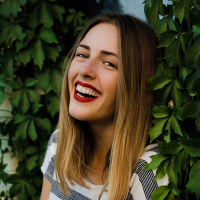
Candace Smith
Candace Smith currently studies Art History at the University of North Texas where she is working towards an MA under Dr. Nada Shabout in the field of Modern and Contemporary Art of the Middle East. Her current research explores issues of power, identity politics, and built space in the context of postwar Lebanese Art institutions and reconstruction (1990-present). Smith has presented and lectured on politics, power, and space, both as a university level and at the Texas Sculpture Symposium with NY-based artist Wafaa Bilal. She has also spent time abroad meeting and working directly with some of Beirut’s most prominent art collectors and foundations as well as emerging Beirut-based artists such as Hiba Kalache. Smith received a BA from Texas Tech University after completing undergraduate thesis work on 21st-Century street art created during times of conflict in central Cairo and the West Bank. Working directly with published photojournalists and prominent, local artists, Smith addressed local agency and perceptions of space in direct contrast with American and European activity in the area. Smith was the director of social media for AMCA and collaborated with Selections Magazine on their Winter 2018 Art Pages.
Blick Art Materials Student Scholarship
CAA Annual Conference Supporter Sponsor, Blick Art Materials supports four CAA student members with a $250 scholarship. The 2019 winners are:
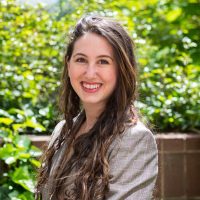
Margot Bernstein
Margot Bernstein is an advanced PhD candidate at Columbia University with a specialization in eighteenth-century art and material culture. Her dissertation, “Carmontelle’s Profile Pictures and the Things that Made Them Modern,” examines hundreds of portraits on paper by Louis Carrogis called Carmontelle (1717-1806), a French amateur draftsman. Margot holds a BA (2010) in art history and history from Williams College and an MA (2012) in the History of Art from the Courtauld Institute of Art. She also holds an MA (2014) and an MPhil (2015) in art history from Columbia University. In recent years, she has worked at the Metropolitan Museum of Art, the Frick Collection, the Morgan Library & Museum, the New-York Historical Society, the Calder Foundation, and the Williams College Museum of Art. Currently, Margot is a Chester Dale Fellow in the Department of Drawings and Prints at the Metropolitan Museum of Art.
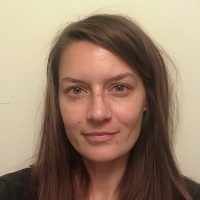
Jessica Crocker
Jessica Rae Crocker lives and works in Prescott, AZ. She is currently pursuing her PhD in Philosophy, Aesthetics, and Art Theory through IDSVA (Institute for Doctoral Studies in the Visual Arts). She is a ceramic artist focusing on the role of craft as a means to develop intimacy. Her recent work explores relationships and limerence through the use of imbedded interactive technologies. She works in both figurative and functional paradigms embracing the historical symbolism of the clay material in its many forms. This generous gift is allowing her to attend the CAA conference for the first time.

Kimberly Minor
Kimberly Minor is a doctoral candidate in Art History at the University of Oklahoma. Her research broadly focuses on American art, with interests in material culture, art of the early American West, and Northern Plains Indian drawings. Her dissertation “Pictographic Motifs: Memory and Masculinity on the Upper Missouri” engages the visual, material, and experiential sources of military imagery produced by the Mandan and Hidatsa during the early nineteenth-century. She studies how indigenous male identity was negotiated through constant confrontation (both physical and spiritual) with war and warriors, adding to a growing body of scholarship that emphasizes and affirms the importance of indigenous histories. Her research has been supported by the Smithsonian Institute of Museum Anthropology and the ACLS/Luce Dissertation Fellowship in American Art.
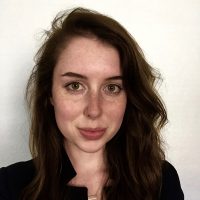
Laura Stowell
Laura Stowell is a third-year PhD Student in Art History at the University of Washington, Seattle. She received her MA in Contemporary Art from Sotheby’s Institute of Art, New York. Her research explores intersections of performance, affect, aesthetics, and trauma in art from 1945 to the present, with specific emphasis on feminist approaches to the body. In 2018 she presented a paper titled “Listening to the Body in Pain: Regina José Galindo’s (279) Golpes” at UC San Diego’s Graduate Visual Arts Symposium, and a paper titled “Pathography and the work of Alina Szapocznikow” at the Legacies of the Enlightenment Workshop at Michigan State University. She worked as the Curatorial Assistant at the Henry Art Gallery, Seattle, and plans on continuing to work in the curatorial field.
Criteria for the Scholarship
Awardees were chosen at random and fulfilled the following criteria:
- Individuals were registered for the Annual Conference by the Early Registration deadline
- Individuals are current CAA members with proof of student status
- Individuals did not receive conference registration or travel reimbursement from their institution or employer
We look forward to seeing you in New York City next month! The 107th Annual Conference is February 13-16, 2019. Click here to explore the conference program.
New in caa.reviews
posted by CAA — Jan 18, 2019
Marnin Young reviews Misère: The Visual Representation of Misery in the 19th Century by Linda Nochlin. Read the full review at caa.reviews.
Joseph Hammond writes about Louvre Abu Dhabi by Jean-François Charnier, and From One Louvre to Another: Opening a Museum for Everyone by Jean-Luc Martinez and Juliette Trey. Read the full review at caa.reviews.
Marta Gutman explores The Roots of Urban Renaissance: Gentrification and the Struggle over Harlem by Brian D. Goldstein, and An Architecture of Education: African American Women Design the New South by Angel David Nieves. Read the full review at caa.reviews.
Nikki Moore looks at From the Page to the Street: Latin American Conceptualism at the Blanton Museum of Art. Read the full review at caa.reviews.
Marin R. Sullivan writes about Sculpture Vertical, Horizontal, Closed, Open by Penelope Curtis. Read the full review at caa.reviews.
caa.reviews Seeks Editor-in-Chief and Four Field Editors
posted by CAA — Jan 15, 2019
caa.reviews Seeks Editor-in-Chief
The caa.reviews Editorial Board invites nominations and self-nominations for the position of Editor-in-Chief for a three-year term, July 1, 2020–June 30, 2023. This term is preceded by one year of service on the editorial board as editor designate, July 1, 2019–June 30, 2020, and followed immediately by one year of service as past editor. Candidates should have published substantially in the field and may be academic, museum-based, or independent scholars; institutional affiliation is not required. An online journal, caa.reviews is devoted to the peer review of new books, museum exhibitions, and projects relevant to the fields of art history, visual studies, and the arts.
Working with the editorial board, the editor-in-chief is responsible for the content and character of the journal. The editor-in-chief supervises the caa.reviews Council of Field Editors, assisting them in identifying and soliciting reviewers, articles, and other content for the journal; develops projects; and makes final decisions regarding content.
The editor-in-chief attends the caa.reviews Editorial Board’s three meetings each year—held in New York in May and October and once at the Annual Conference in February—and submits an annual report to CAA’s Board of Directors. CAA reimburses the editor-in-chief for travel and lodging expenses for the two New York meetings in accordance with its travel policy, but the person in this position pays these expenses to attend the conference. The editor-in-chief also works closely with the CAA staff in New York and receives an annual honorarium paid quarterly.
Candidates must be current CAA members and should not be serving on the editorial board of a competitive journal or on another CAA editorial board or committee. Nominators should ascertain their nominee’s willingness to serve before submitting a name; self-nominations are also welcome. Please send a letter describing your interest in and qualifications for appointment, a CV, at least one letter of recommendation, and your contact information to: caa.reviews Editor-in-Chief Search, CAA, 50 Broadway, 21st Floor, New York, NY, 10004; or email the documents to Publications and Programs Editor Joan Strasbaugh, jstrasbaugh@collegeart.org. Deadline: April 1, 2019; finalists will be interviewed in early May.
caa.reviews Seeks Four Field Editors
In addition, CAA invites nominations and self-nominations for FOUR individuals to join the caa.reviews Council of Field Editors for a three-year term July 1, 2019–June 30, 2022. An online journal, caa.reviews is devoted to the peer review of new books, museum exhibitions, and projects relevant to art history, visual studies, and the arts.
The journal seeks four field editors in the following areas:
- Design History
- Eighteenth-Century Art
- Architecture and Urbanism
- Theory and Historiography
Working with the caa.reviews editor-in-chief, the caa.reviews Editorial Board, and CAA’s staff editor, each field editor selects content to be reviewed, commissions reviewers, and considers manuscripts for publication. Field editors for books are expected to keep abreast of newly published and important books and related media in their fields of expertise, and those for exhibitions should be aware of current and upcoming exhibitions (and other related projects) in their geographic regions.
The Council of Field Editors meets yearly at the CAA Annual Conference. Field editors must pay travel and lodging expenses to attend the conference. Members of all CAA committees and editorial boards volunteer their services without compensation.
Candidates must be current CAA members and should not be serving on the editorial board of a competitive journal or on another CAA editorial board or committee. Nominators should ascertain their nominee’s willingness to serve before submitting a name; self-nominations are also welcome. Please send a cover letter describing your interest in and qualifications for appointment, a CV, and your contact information to: caa.reviews Editorial Board, CAA, 50 Broadway, 21st Floor, New York, NY 10004; or email the documents to staff editor Joan Strasbaugh, jstrasbaugh@collegeart.org. Deadline: April 15, 2019.
CWA Picks for January 2019
posted by CAA — Jan 14, 2019
CAA’s Committee on Women in the Arts selects the best in feminist art and scholarship to share with CAA members on a monthly basis. See the picks for January below.
FEMINIST EXPRESSIONS: INVITATIONAL SHOW FEATURING KENTUCKY FOUNDATION FOR WOMEN ARTIST ENRICHMENT GRANTEES
November 30, 2018 – January 19, 2019
Kaviar Gallery, Louisville, KY
Kentucky isn’t exactly thought of as the feminist mecca. But seventeen invited artists from around this Southern state present poignant artwork around highly charged social topics such as immigration, femicide, media and materiality, food and animal abuse, astrology, pollution and more. Whitney Withington’s intimately hand-crafted journals feature vintage vernacular photography from Appalachia, reversing the trend of invisibility of African American women in Appalachian imagery and literature. Dijana Muminovic, an artist who survived the Bosnian War, exhibits a keen and affecting photograph reflecting Bosnian women and their search for separated loved ones. Diane Kahlo pays homage to the disappeared/murdered young women of Ciudad Juárez, Mexico’s via her small, richly hued portraits with an altar adorned with sequined skulls and ceramic roses. Through her sensual quilted works, Jennifer Hart combines the warmth of fabric with the brashness of pornography to re-humanize the dehumanized nude female body. The 17 artists exude a stellar combination of aesthetic and the boldness and excellence necessary to make real change, significantly in a lesser recognized area.
Anni Albers
October 11, 2018 – January 27, 2019
Tate Modern
Bringing together more than 350 objects, this retrospective exhibition of the Bauhaus-trained weaver, whose 1965 text On Weaving has been a standard-bearer in the realm of fiber arts. In Open Letter, a wall-hanging from 1958, Albers produced a cacophony of patterns using only black, white, and a minimal amount of copper-colored thread. Mathematically precise the tapestry scintillates with a seemingly improvisatory energy. Each of the works on display merit close and persistent looking—their gifts both readily available and hidden in the warp and weft of Albers’ keen compositional intelligence. Of particular interest is the fact that the curators have gathered together source material that informed Alber’s On Weaving, and thus one also gets the picture of Albers as inveterate magpie, collector, and cultural connector.
In 1939 Albers wrote about material, and the benefits of artistic perseverance: “But most important to one’s own growth is to see oneself leave the safe ground of accepted conventions and to find oneself alone and self-dependent. It is an adventure which can permeate one’s whole being. Self-confidence can grow. And a longing for excitement can be satisfied without external means, within oneself; for creating is the most intense excitement one can come to know.” The sagacity that comes with self-sufficiency is on full display here, even if Albers is still only mentioned in surveys of Western Art History as a footnote to her husband’s artistic and teaching career. Hopefully this exhibition and its accompanying catalog go a ways toward changing that.
Let’s Try Listening Again, 13th A.I.R. Biennial
January 9 – February 3, 2019
A.I.R. Gallery
In an attempt to locate empathy as an enactment the curators of the 13th A.I.R. Biennial, Sarah Demeuse and Prem Krishnamurthy, have gathered twenty-nine works that work to reengage the radical activity of listening. A part of feminist and critical race conversations for decades, listening has been a central focus of cultural forms such as consciousness-raising and witnessing. Placing a premium on this important component of political awakening and action, the curators seek to orient viewers towards “novel forms of communing,” incorporating rest, pause, and reflection. Participating artists include: Angeli, Angie Keefer, Anna Riley, Catalina Viejo López de Roda, Dulce Gómez, Fotini Vurgaropulou, Hagen Verleger, Irene Mohedano, Jane Long, Johanna Unzueta, Julie Nagle, Karen Donnellan, Katie Hector, Katja Mater, Katy Mixon, Keren Benbenisty, Kyoung eun Kang, Library Stack, Lukas Eigler-Harding, Malin Abrahamsson, Maren Henson, Matthew Schrader, Olivia Baldwin, Romily Alice Walden, Sari Carel, Scaleno Collective, Shuyi Cao, Suzanne Mooney, Tselote Holley, and Zhenya Plechkina. Opening events included a performance by Angeli (with Jayoung Yoon); closing events will incorporate a performance by Irene Mohedano and the launch of Romily Alice Walden’s A Primer on Working with Disabled Group Members for Feminist / Activist Groups.
CLAIRE PARTINGTON: TAKING TEA
December 7, 2018 – December 6, 2020
Seattle Art Museum
British ceramicist artist Claire Partinginton’s work flips the typical script of the Seattle Art Museum’s Porcelain Room for a whole two years, demonstrating a strong sense of acknowledgement of institutional limitations. Taking Tea is the first ever installation in the visitor favorite Porcelain Room since its debut in 2007. The Porcelain Room includes more than 1,000 European and Asian porcelain pieces from SAM’s collection grouped to evoke porcelain as a treasured commodity between the East and the West. This is precisely where the artist’s inspiration lies, within the European tradition of appropriation and reinterpretation or misinterpretation of “exotic” styles. She writes, “I like the idea of getting it slightly wrong and the bluffing and ‘cobbling together’ of styles that has resulted in some fantastic historical objects.” The results are familiarly finely crafted ceramics of pristine, richly adorned figures with contemporary details and jolting couplings, an installation referencing Baroque painting and European porcelain factories, as well as a panel mounted with fragments from 17th- and 18th-century shipwrecks. A group of four in fancy attire pose as if “taking tea” while a single figure lay, stomach down, in the middle of their fine affair, reflecting the troubling aspects of the era they depict, yet resonating with the still continued issues with international trade and economy. It’s sure to be a trip!
Member Spotlight: Renata Holod
posted by CAA — Dec 18, 2018
Renata Holod is College of Women Class of 1963 Term Professor in the Humanities, at the History of Art Department, and Curator, Near East Section, Museum of Archaeology and Anthropology, at the University of Pennsylvania. She has carried out archaeological and architectural fieldwork in Syria, Iran, Morocco, Turkey, Central Asia, Tunisia, and Ukraine, and is the author of numerous books and essays.
CAA media and content manager Joelle Te Paske corresponded recently with Professor Holod to learn more about what she’s working on.

Joelle Te Paske: Thank you for taking the time, Professor. So to begin, where are you from originally?
Renata Holod: I was born in Ukraine, and grew up in Edmonton, Alberta and then Toronto, Ontario, Canada.
I have a BA in Islamic Studies from the University of Toronto; a MA from University of Michigan in the History of Art, and my PhD from Harvard in Fine Arts.
JTP: What led you to the work you do now?
RH: My work on projects varies in date and methodology, from archaeology (I worked in Syria, and Tunisia), to architectural and regional history of different periods and locations (including fourteenth- to fifteenth-century architecture, settings and cities in greater Iran, and contemporary architecture from Morocco to Indonesia), to work on objects and collections (ceramics, the late Ottoman painter Osman Hamdi Bey). I get bored quickly.
JTP: You’ve been a CAA member for over 40 years. How has the field changed?
RH: There are many more practitioners in my particular field. In fact, it is no longer one field, but could be divided into regional and temporal sub-fields. There is much more theorization, and also expanded archival work (e.g. Ottoman archives), and now digital humanities, etc.
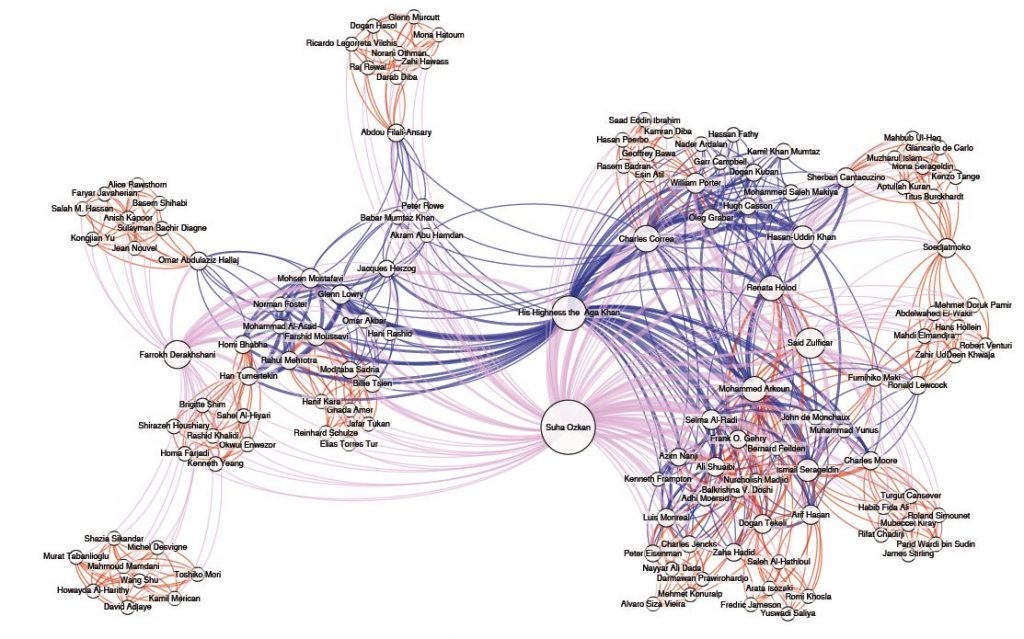
JTP: What is the most exciting part of your work currently?
RH: Studying unpublished objects, and redoing the galleries and publishing the Middle East collection for the later periods (Parthian through the nineteenth century) at the Penn Museum.
JTP: A favorite exhibition or study you’ve worked on over the years?
RH: Whichever one is currently being submitted.
JTP: What is your top recommendation for our readers?
RH: Network Theory and its application; see the work of my former student, Yael Rice on Mughal workshops, as well as the work of Johannes Preiser-Kappeler (Vienna).
JTP: What is a favorite memory from a CAA conference?
RH: Seeing my former students give papers; and meeting my former classmates.
JTP: Thank you, Professor Holod.
Renata Holod is College of Women Class of 1963 Term Professor in the Humanities, at the History of Art Department, and Curator, Near East Section, Museum of Archaeology and Anthropology, at the University of Pennsylvania. She has carried out archaeological and architectural fieldwork in Syria, Iran, Morocco, Turkey, Central Asia, Tunisia, and Ukraine. She is co-author of City in the Desert: Qasr al- Hayr East (1978); Architecture and Community: Building in the Islamic World Today (1983); The Mosque and the Modern World (1997); The City in the Islamic World (2008) and An Island Through Time: Jerba Studies (2009). She was recently part of the team redoing the Middle East galleries at the Penn Museum, with a special issue of Expedition magazine and a new handbook as well. Her most recent articles are: “Approaching the Mosque: Birth and Evolution” in The World of the Mosque: Magnificent Designs (New York: Rizzoli, 2017) 14-21, and “Jerba in the 3rd/9th century CE: Under Aghlabi Control?” in The Aghlabids & their Neighbors: Art & Material Culture in Ninth-Century North Africa, Glaire D. Anderson, Corisande Fenwick, and Mariam Rosser-Owen, eds. (Leiden: Brill, HdO series, 2017), 451- 469. On several international advisory and editorial boards, she has also served as President, Board of Trustees at The Ukrainian Museum in NYC, 2013-2017.
Explore the Latest Issue of The Art Bulletin
posted by CAA — Dec 18, 2018
Print copies of The Art Bulletin will arrive in mailboxes soon. Click here to explore the digital version.
TABLE OF CONTENTS
EDITOR’S NOTE
Owning, Claiming, and Representing Land
Nina Athanassoglou-Kallmyer
ARTICLES
Mastering the Landscape: Geometric Survey in Sixteenth-Century France
Anthony Gerbino
Shifting Panoramas: Contested Visions of Cuzco’s 1650 Earthquake
Patrick Thomas Hajovsky
Landscape and Iconicity: Proskynetaria of the Holy Land from the Ottoman Period
Pnina Arad
Entertaining War: Spectacle and the Great “Capture of Wuhan” Battle Panorama of 1939
Kari Shepherdson-Scott
REVIEWS
Olga Bush, Reframing the Alhambra: Architecture, Poetry, Textiles and Court Ceremonial
Patricia Blessing
Jennifer Raab, Frederic Church: The Art and Science of Detail
Katherine Manthorne
Not a member? Click here to join CAA and explore the issue in full.
New in caa.reviews
posted by CAA — Dec 07, 2018
Mark Duerksen reviews Architecture and Politics in Nigeria: The Study of a Late Twentieth-Century Enlightenment-Inspired Modernism at Abuja, 1900–2016 by Nnamdi Elleh. Read the full review at caa.reviews.
Holly Shaffer writes about Worldly Affiliations: Artistic Practice, National Identity, and Modernism in India, 1930–1990 by Sonal Khullar. Read the full review at caa.reviews.
Kristoffer Neville discusses The Chiaroscuro Woodcut in Renaissance Italy by Naoko Takahatake. Read the full review at caa.reviews.
Announcing Milette Gaifman and Lillian Lan-ying Tseng as Coeditors of The Art Bulletin
posted by CAA — Dec 06, 2018
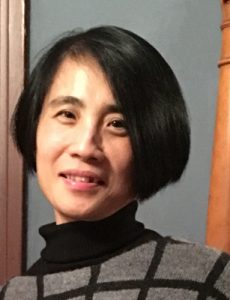
Lillian Lan-ying Tseng
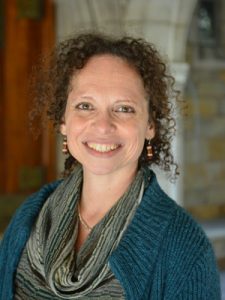
Milette Gaifman
We’re pleased to announce the appointment of Lillian Lan-ying Tseng and Milette Gaifman as the new coeditors of The Art Bulletin. The appointment marks the first joint editorship in the 105-year history of the journal. The Art Bulletin is the flagship journal of art history, covering prehistoric to 21st-century art. Previous editors of The Art Bulletin have included H. W. Janson, George Kubler, Millard Meiss, and John Shapley, among many others. The Art Bulletin editorship rotates every three years.
“CAA believes in interdisciplinary practice and collaboration in all programs and publications. The Art Bulletin’s rich and long history as the journal of record for the art history field will only benefit from this new coeditor approach,” said Hunter O’Hanian, executive director of CAA. “Professors Tseng and Gaifman are highly respected in the field and will bring to the journal diverse experiences and expertise that will be reflected in The Art Bulletin over the years of their editorship.”
Lillian Lan-ying Tseng is associate professor of East Asian art and archaeology at the Institute for the Study of the Ancient World at New York University and specializes in Chinese art and archaeology. The mediums she investigates are diverse, including city planning, architecture, sculpture, painting, calligraphy, textile, and bronze objects. The timeframes of her publications cluster in early imperial China, later imperial China, and the twentieth century. The issues she explores concern not only art objects but also broader contexts in which they are situated, such as how artisans appropriated scientific knowledge for religious purposes, how memory facilitated the creation, circulation, and reception of artifacts, and how political intentions or situations stimulated the development of visual and material cultures. She is the author of Picturing Heaven in Early China (Harvard University Press, 2011). She is currently at work on two book projects: one looks into the reception of antiquity and its impact on visual production in 18th-century China, while the other examines frontiers and visual imaginations in Han China.
“Art and visual culture are central elements in the study of ancient civilizations, as they are of all periods of history,” said Alexander Jones, Leon Levy Director and Professor of the Exact Sciences in Antiquity, Institute for the Study of the Ancient World, NYU. “The Institute for the Study of the Ancient World is proud and delighted on the occasion of Lillian Tseng’s appointment as coeditor of The Art Bulletin.”
Milette Gaifman is associate professor of classics and history of art at Yale University. She is a scholar of ancient art and archaeology, focusing primarily on Greek art of the Archaic and Classical periods. At Yale, she is jointly appointed in the departments of Classics and History of Art. Her research interests include the interaction between visual culture and religion, the variety of forms in the arts of antiquity, the interactive traits of various artistic media, and the reception of Greek art in later periods. In addition, her scholarship explores the historiography of the academic disciplines of art history and archaeology. She is the author of Aniconism in Greek Antiquity (Oxford University Press, 2012), and The Art of Libation in Classical Athens (Yale University Press, 2018); and coeditor of “Exploring Aniconism,” a thematic issue of Religion (2017), and “The Embodied Object in Classical Art,” a special issue of Art History (June 2018).
“It is a significant honor for Yale and for the field of Classical Greek Art that Milette Gaifman has been appointed co-editor of The Art Bulletin. Successor in this role to such hallowed Yale luminaries as Creighton Gilbert and Walter Cahn, Milette will bring the same dynamism and intellectual energy to the position that can be seen in her publications and her hugely successful teaching in our Department,” said Timothy Barringer, Chair and Paul Mellon Professor in the Department of the History of Art at Yale University. “Author of two path-breaking books, Milette is a scholar of wide-ranging tastes and interests, who insists on methodological rigor but also enjoys crossing scholarly borders and dismantling the shibboleths of orthodox thinking. Working with our respected former colleague, Lillian Tseng, she will doubtless bring a new, iconoclastic and perhaps occasionally irreverent spirit to an august journal.”



